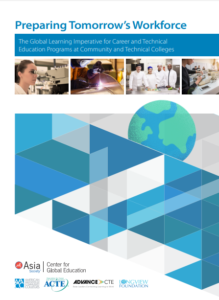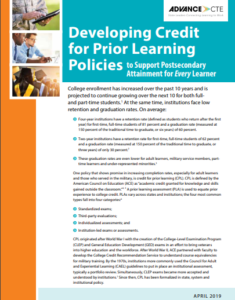We have compiled a list of highlights in Career Technical Education (CTE) from this week to share with you.
WEBINAR OF THE WEEK
Advance CTE hosted a webinar with the U.S. Chamber of Commerce Foundation and industry leaders who have built long-lasting and meaningful two-way partnerships to improve both learner outcomes and industry’s talent needs. New resources from The U.S. Chamber of Commerce Foundation, developed with support from Advance CTE, were shared and discussed to strengthen employer-CTE relationships using the Talent Pipeline Management(R) process.
View the recording here, and sign up for our next webinar, CTE Forward: How to Attract and Recruit Diverse Students at the Postsecondary Level: Lessons from Aspen Institute on July 9!
TWEET OF THE WEEK
Many school districts have developed innovative ways to honor graduating seniors in ceremonies in light of social distancing orders. Take a look at how seniors from one high school in the state of Virginia raced to the finish line. Read more here.
Did you see how our seniors received their diplomas last week? https://t.co/FasapMhe1g @HenricoCTE @HenricoSchools #CTEWorks pic.twitter.com/SP9d0FAdVu
— Henrico CTE (@HenricoCTE) June 16, 2020
PRIZE COMPETITION OF THE WEEK
The Evergreen National Education Prize identifies and scales programs that best help low-income youth access and complete college or CTE degrees. Learn more about what the prize consists of, past prize winners, eligibility criteria and more. Applications are now being accepted and must be completed in full by 5 p.m. ET on July 3, 2020. Email info@evergreenprize.org with any questions.
LEGISLATIVE UPDATE OF THE WEEK
The U.S. Department of Education approved six more state plans under the Strengthening Career and Technical Education for the 21st Century Act (Perkins V). The newly approved plans are from Colorado, Florida, Kentucky, New York, South Carolina and Utah. As of now, 31 state plans have been approved in total. You can check out which states’ plans are approved, as well as the final materials on our website.
RESOURCE OF THE WEEK
Advance CTE examined research and best practices in Developing Credit for Prior Learning Policies to Support Postsecondary Attainment for Every Learner. This report features data on the benefits of Credit for Prior Learning (CPL) for learners, as well as best practices in Colorado, Kansas, Louisiana, Minnesota, Tennessee and Virginia across topics such as CPL for military service members, portability of credits and how to communicate about CPL opportunities. View the report here.
Brittany Cannady, Digital Media Associate




